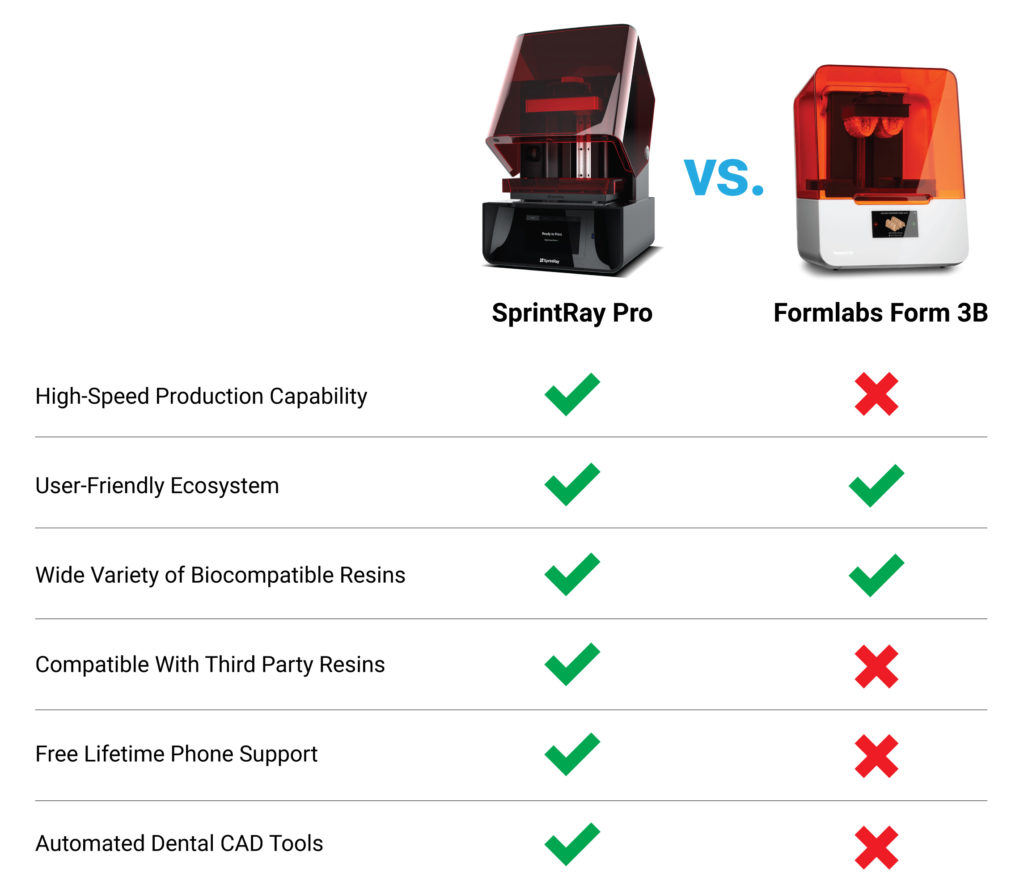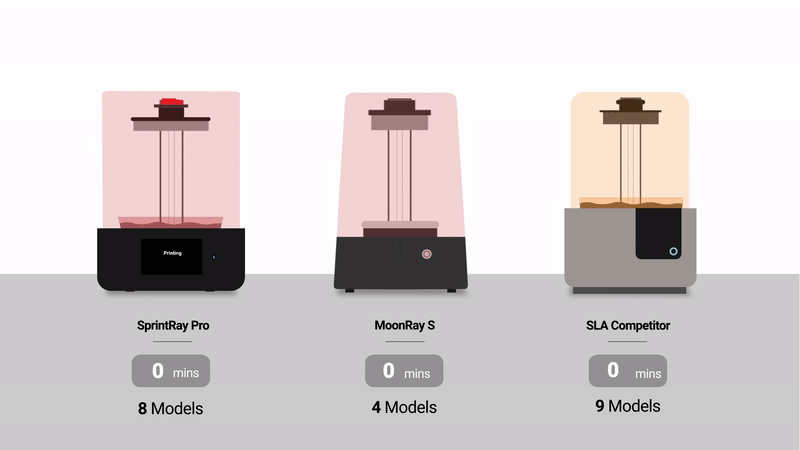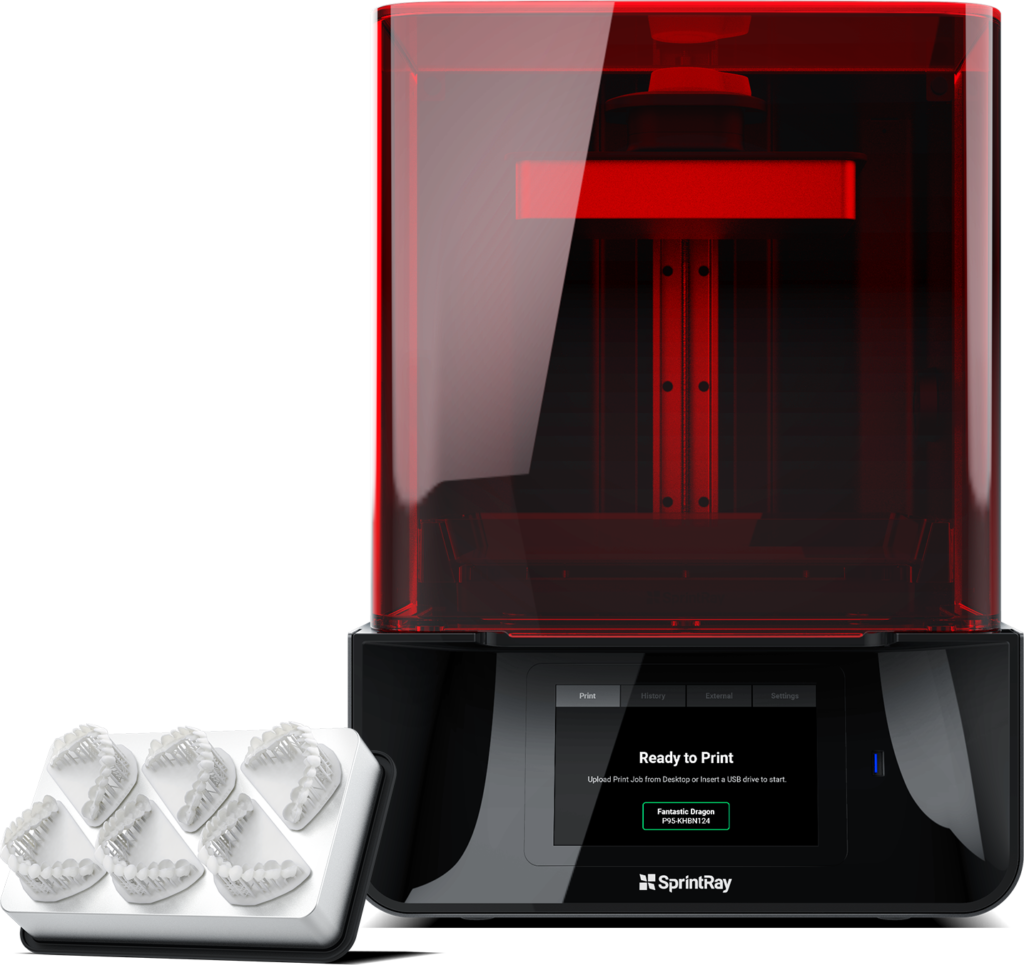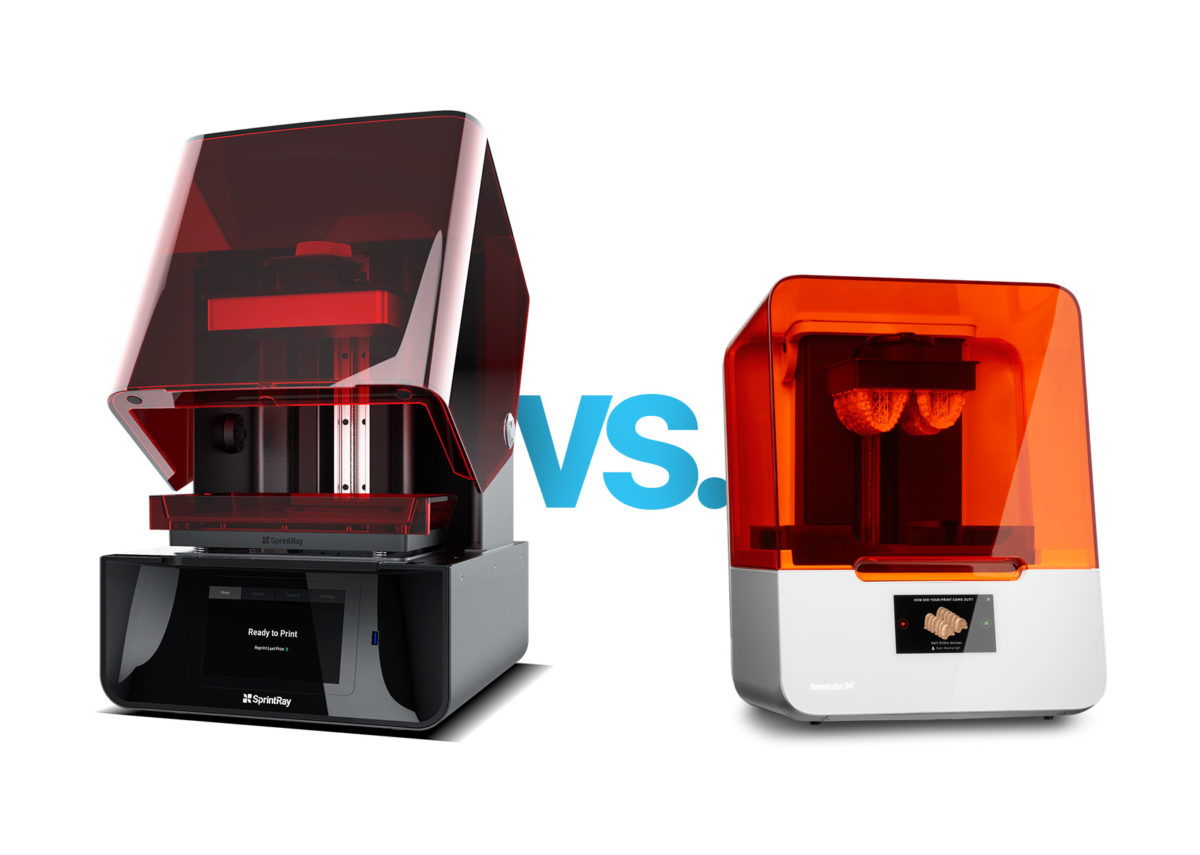As dental practices make wider use of 3D printing technology, a growing number of dental professionals have found themselves looking into additive manufacturing to open new opportunities for clinical flexibility and patient care. But before simply buying a 3D printer, it’s extremely important to carefully weigh the options and find the best possible machine for your needs.
Two popular choices in the dental 3D printer market are the SprintRay Pro and the Formlabs Form 3B. While both of these printers have a great deal to offer, there are some fundamental differences between the two that affect their overall usefulness for dental professionals. In this blog post, we break down the critical SprintRay Pro Vs. Formlabs Form 3B facts that all dentists should know before deciding on the best dental 3D printer for their practices.
Core Technological Differences Between the SprintRay and Formlabs 3D Printers
At the heart of the SprintRay Pro Vs. Formlabs Form 3B discussion is a fundamental difference in 3D printing technology. While both printers photopolymerize liquid resin layer-by-layer to produce three-dimensional objects, the technologies involved are fundamentally different and result in a substantial printing speed gap between the two devices.
The Formlabs Form 3B utilizes a process known as laser-stereolithography (SLA), in which a laser is moved across a tank of liquid resin to create layers of solidified material in the desired shape. This process, though often used in 3D printing, can be slow because SLA printing time scales in direct proportion to the surface area of each layer; the more surface area being printed, the longer the print time will be.
In contrast, the SprintRay Pro uses a faster process known as digital light processing (DLP). In DLP 3D printing, light is projected in the shape of each desired layer into the liquid resin, allowing an entire layer to be created simultaneously. With DLP, print time is independent of the surface area of each layer; each layer is cured quickly with a single flash of light, regardless of the total surface area. Typically, a DLP 3D printer can create prints up to 12 times faster than a comparable SLA printer.
The use of DLP technology is one of the reasons that the SprintRay Pro stands out as the best dental 3D printer in the industry. With DLP’s accelerated printing speeds, the SprintRay Pro can print up to 8 flat arches in under 30 minutes. This capability makes it a more effective and efficient dental 3D printer than traditional SLA machines.
SprintRay Pro Vs. Formlabs Form 3B: Specifications
In addition to the fundamental differences between laser-SLA and DLP technology, there are also several smaller differences between these two 3D printers that affect their usefulness in digital dentistry. In the following sections, we’ll explore key specifications of the SprintRay Pro and Formlabs Form 3B and their relationship to dental 3D printing.

Maximum Build Volume
Whenever multiple aligners, dentures, surgical guides or other objects need to be printed at once, it is essential for a practice to have a dental 3D printer with a sufficiently large build volume to manage the required load. In this category, both the SprintRay Pro and the Formlabs Form 3B perform quite well. The SprintRay Pro offers a maximum build volume of 18.2×10.2×20 centimeters, while Form 3B’s maximum volume comes in at 14.5×14.5×18.5 centimeters.

While the total volumes of the two machines are relatively close, it should be noted that the SprintRay Pro has been designed with dental applications specifically in mind, while Form 3B is intended as a general-purpose 3D printer. As a result, SprintRay Pro’s build dimensions are optimized for printing dental prostheses, guides, and aligners in large batches. As an example of this capability, the printer is able to create batches of up to 30 dental models simultaneously.
Resin Compatibility
Another extremely important technical difference between the Formlabs Form 3B and the SprintRay Pro is resin compatibility. Although Formlabs offers a reasonably extensive line of dental resins for its 3D printers, the Formlabs environment is a strictly proprietary system. In other words, Formlabs Form 3B can only use the resins offered by Formlabs. This limits a user’s ability to benefit from large advances in materials science which come from other resin manufacturers.

The SprintRay Pro, by contrast, leverages a certified open resin platform to give dental practices a wider choice of materials. In addition to the dental resins made by SprintRay, the Pro 3D printer can also use resins made by other manufacturers, including DENTCA and NextDent. In addition to giving practices a greater range of materials choices today, this unique position also provides future growth as new materials are released, making Pro an excellent investment for the future of dental 3D printing.
Software and Connectivity
For SprintRay 3D printers, powerful software tools are available for automatically converting intraoral scans into a printable format, allowing dentists to spend more time with their patients and less time navigating complex computer-aided design programs. This feature helps unlock what is by far the most common workflow for dental 3D printing: the production of models for diagnostics, esthetic wax-ups, and aligners.
While the Formlabs Form 3B is by no means lacking in advanced technology, SprintRay’s RayWare software synergizes perfectly with the high production capacity of DLP technology, allowing dental professionals to mass-produce models at a rate of more than 16 arches per hour. SprintRay Pro also features a 6-core onboard touchscreen computer, allowing it to receive direct prints via a USB drive on the front panel.
Which is the Superior Dental 3D Printer?
When looking at a comparison of the SprintRay vs Formlabs 3D printers, it’s important to consider intended use. While Form 3B offers similar printing capabilities and smaller layer thicknesses than the SprintRay Pro, the fact that the Pro is fundamentally designed with digital dentistry in mind gives it the edge as a dental 3D printer. Couple this fact with the vastly enhanced printing speeds made possible by DLP technology and the SprintRay Pro becomes a clear winner in terms of the value and utility it can provide to dental practices looking to leverage the next generation of digital technologies to better serve patients.








